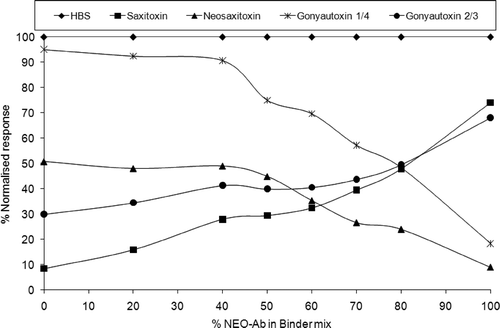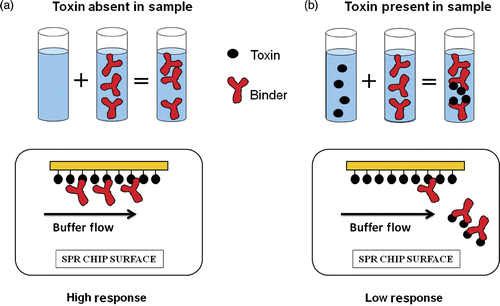Figures & data
Figure 1. Structure, relative molecular mass (RMM) and toxicity factor of paralytic shellfish poisoning (PSP) toxins.
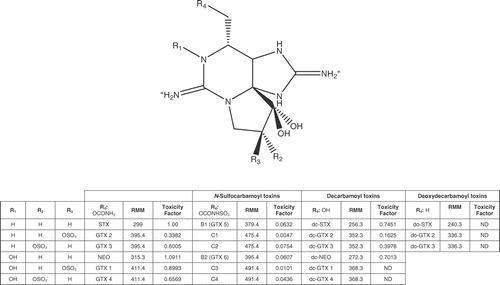
Figure 2. SPR optical biosensor sensorgram of the molecular interaction between the binder and immobilised surface. Source: Abery (Citation2001). Courtesy: Biacore International AB, GE Healthcare.
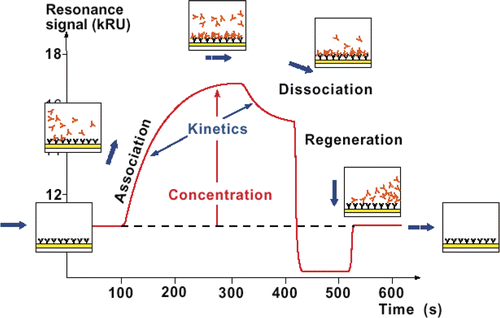
Figure 4. Typical response versus PSP toxin concentration calibration curve using a polyclonal antibody binder.
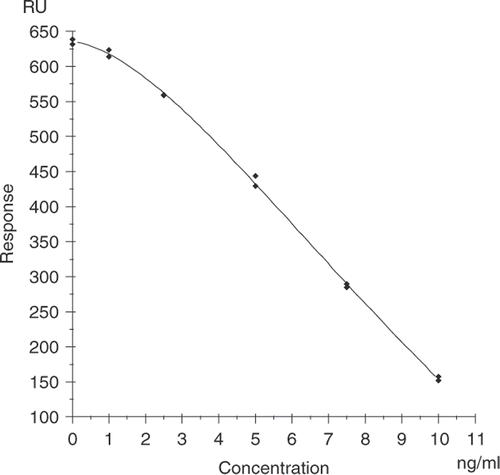
Figure 5. Trends in carbamate toxin response at a fixed concentration of 10 ng ml−1 with increasing percentage of NEO antibody in STX/NEO antibody binder mix. Source: Campbell et al., unpublished data.
